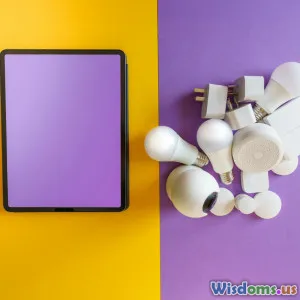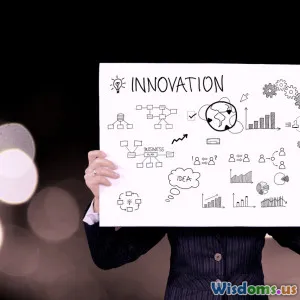
Introduction to Internet of Things (IoT) for Businesses
6 min read Discover how IoT can transform business operations, enhance efficiency, and foster innovation. (0 Reviews)
Introduction to Internet of Things (IoT) for Businesses
The Internet of Things (IoT) is no longer a futuristic concept; it has become a fundamental element reshaping the way businesses operate. By connecting everyday objects to the internet, IoT enables the collection and exchange of data, fostering smarter decision-making and operational efficiencies. In this article, we will delve into what IoT is, its key components, the benefits it brings to businesses, and practical examples of its applications across various sectors.
What is IoT?
IoT refers to a network of physical devices embedded with sensors, software, and other technologies that allow them to connect and exchange data over the internet. This interconnectivity facilitates real-time data collection, monitoring, and analysis, which can be leveraged to optimize various business processes.
Key Components of IoT
- Devices/Sensors: These are the physical objects equipped with sensors to collect data. Examples include smart thermostats, wearables, and industrial machinery.
- Connectivity: Devices need to connect to the internet or other devices for data transmission. This can be achieved through Wi-Fi, Bluetooth, cellular networks, or other communication protocols.
- Data Processing: Once data is collected, it must be processed and analyzed. This can occur on the device itself (edge computing) or in the cloud.
- User Interface: Finally, the processed data is presented to users in a comprehensible format, often through dashboards or mobile applications.
Benefits of IoT for Businesses
- Enhanced Operational Efficiency: IoT devices can monitor equipment in real-time, leading to predictive maintenance and reducing downtime. For example, manufacturing companies can use IoT sensors to predict equipment failures before they occur, thereby minimizing disruptions.
- Cost Savings: By optimizing resource usage, IoT can lead to significant cost reductions. Smart energy management systems can help businesses reduce energy consumption, while smart inventory management can minimize waste.
- Improved Decision-Making: With access to real-time data, businesses can make informed decisions swiftly. For instance, retailers can analyze customer behavior and adjust inventory levels accordingly, enhancing customer satisfaction.
- Increased Customer Engagement: IoT enables personalized experiences for customers. For example, smart home devices can learn user preferences and adjust settings automatically, leading to greater customer satisfaction and loyalty.
Real-World Applications of IoT in Business
- Manufacturing: IoT is at the heart of Industry 4.0, where smart factories leverage connected devices to streamline production processes. Companies like Siemens use IoT to monitor machinery and optimize workflows.
- Retail: Retailers are using IoT to enhance the shopping experience. Smart shelves equipped with sensors can notify staff when products are low, ensuring better stock management. Companies like Walmart are investing heavily in IoT for inventory management and customer experience enhancement.
- Healthcare: IoT devices such as wearable health monitors are revolutionizing patient care by enabling remote monitoring and telemedicine. Hospitals can use IoT to track equipment and manage patient flow more effectively.
- Agriculture: Smart farming technologies utilize IoT for precision agriculture. Farmers can monitor soil moisture, weather conditions, and crop health in real-time, leading to improved yield and resource efficiency.
Challenges of Implementing IoT
While the benefits of IoT are significant, businesses face challenges in implementation, including:
- Security Risks: With increased connectivity comes the risk of cyberattacks. Ensuring data security and privacy is paramount.
- Integration Issues: Many businesses operate on legacy systems, making it challenging to integrate new IoT solutions.
- Data Management: The sheer volume of data generated by IoT devices can be overwhelming. Businesses must have robust data management strategies in place to derive actionable insights.
Conclusion
The Internet of Things presents an exciting opportunity for businesses to enhance efficiency, reduce costs, and improve customer engagement. By understanding the components, benefits, and challenges of IoT, organizations can effectively leverage this technology to drive innovation and growth. As IoT continues to evolve, staying informed and adaptable will be key for businesses looking to thrive in the digital age.
Embracing IoT not only prepares businesses for the future but also positions them as leaders in their respective industries. The potential is vast, and the time to act is now.
Rate the Post
User Reviews
Popular Posts





















